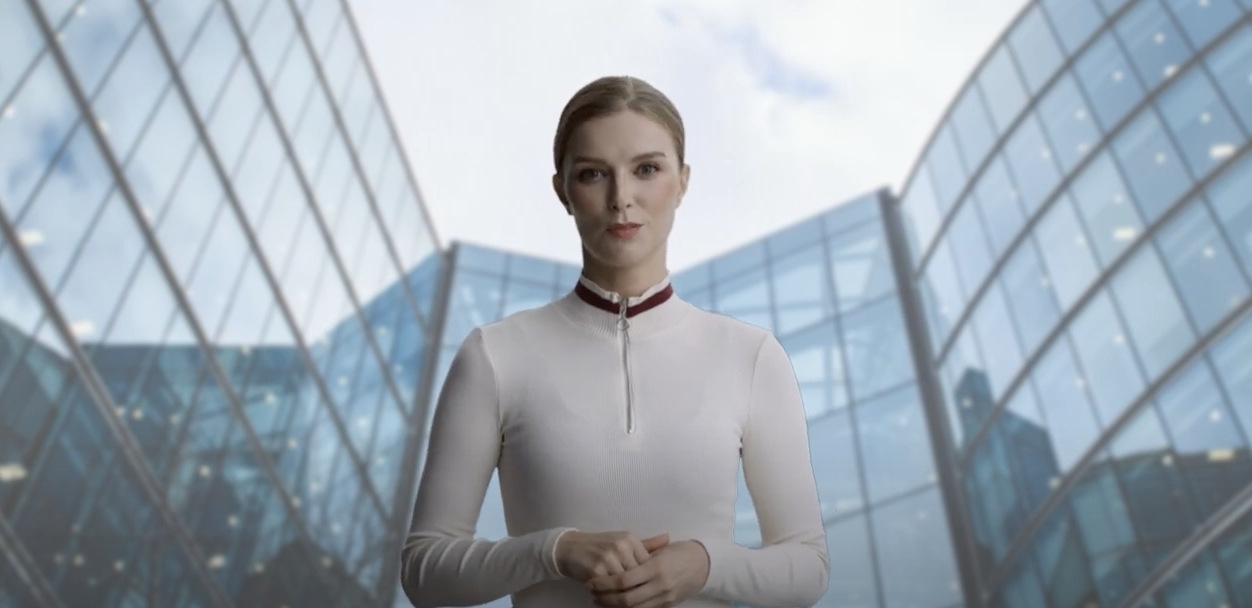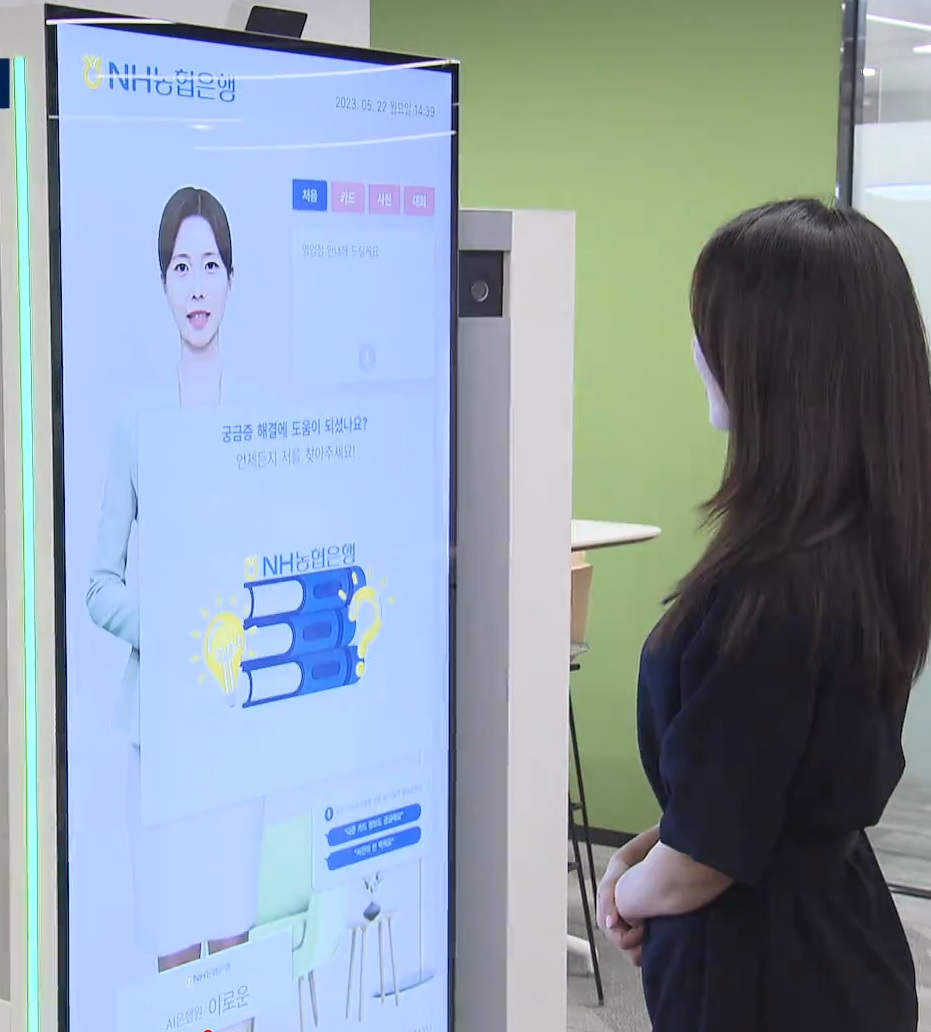I’ve always wondered what it would be like to have two versions of myself: the real me and a digital twin that shares my personality, voice, and style.
Thanks to artificial intelligence, that idea isn’t just sci-fi anymore. With the right tools, I can create an AI avatar that looks and sounds like me, or anyone I can imagine.
I’ve tried a few of these tools myself, and it’s surprisingly simple to get started. You don’t need a technical background or a big budget; just a good idea of what you want your avatar to look and sound like. But what exactly is an AI avatar?
What is an AI avatar?
An AI avatar is a computer-generated digital character that uses artificial intelligence to simulate human-like communication, expressions, and behaviors. AI avatars can appear as 2D or 3D representations and are often used in customer service, virtual assistants, online training, and entertainment platforms.
If you’re curious about making one, AI avatar generators and AI video generators can help bring your avatar to life. All you have to do is upload a photo or describe your vision, and the AI does the rest, creating a lifelike character ready to step into any role you choose.
TL;DR: AI avatars at a glance
- What they are: AI avatars are computer-generated characters that look and sound like real people or stylized personas.
- How they work: They combine image generation, voice synthesis, animation, and natural language processing to simulate lifelike communication.
- How to create one: Upload a photo or pick a pre-made avatar on an AI avatar generator, customize its appearance and voice, add your script, and generate content.
- What are the popular AI avatar generators? Platforms like HeyGen, Synthesia, Elai.io, and VEED.IO offer free plans or trials to experiment.
- What are the benefits: AI avatars can improve engagement, save time, lower costs, and increase accessibility across education, marketing, and customer service.
- What are the risks: Deepfakes, data privacy concerns, bias, and loss of human connection are important considerations.
AI avatars explained: Key features, types, and working
AI avatars can seem complex at first, but once you break them down, they’re really just a combination of visual design, voice technology, and artificial intelligence. Whether you want a photorealistic presenter or a playful cartoon character, most avatars share common traits and capabilities. Here’s what you should know about their main features, the different types available, and how they actually work behind the scenes.
What are the key features of AI avatars?
Most AI avatars include several core features that make them realistic and engaging:
- Visual realism or stylization: Some avatars are designed to look almost indistinguishable from real people. Others embrace a stylized, animated, or cartoon-like look. The visual style you choose depends on your goals—whether you want a polished professional appearance or something more creative and approachable.
- Voice cloning and text-to-speech: Modern AI avatars can generate audio that sounds remarkably human. Many platforms offer text-to-speech voices in multiple languages and accents. Some tools even let you clone your own voice, so the avatar sounds exactly like you.
- Lip-sync and facial animation: High-quality avatars don’t just play a recording; they sync their mouth and facial movements to the audio in real time. This creates the illusion that your digital character is actually speaking and reacting in the moment.
- Emotional expression: To feel more lifelike, avatars can show emotions like happiness, surprise, curiosity, or seriousness. Subtle changes in facial expression and body language help the avatar connect with viewers on a more human level.
- Interactivity: The most advanced avatars can respond to user input, answer questions, and even hold conversations. Interactivity is often powered by natural language processing and real-time rendering, making the experience feel dynamic and personal.
What are the types of AI avatars?
AI avatars come in a variety of forms, each offering different strengths depending on how you plan to use them:
- Photorealistic avatars: These avatars are created to look as close to a real human as possible. They’re commonly used in corporate training videos, virtual events, and any scenario where a professional, credible presence matters. Photorealistic avatars can make viewers feel like they’re interacting with a real person, which builds trust and engagement.
- Animated or cartoon avatars: If you’re going for a more playful, creative approach, animated avatars are a great option. These characters often have bright colors, exaggerated expressions, and a style that’s perfect for social media content, educational videos, or marketing campaigns that need to stand out.
- 3D avatars: Unlike static 2D images, 3D avatars are fully three-dimensional models you can rotate, pose, and animate in a virtual space. They’re commonly used in gaming, virtual reality environments, and interactive applications where you want a digital character to move naturally through a scene.
- Virtual humans: Virtual humans take realism and interactivity to the next level. They combine high-fidelity visuals with AI-powered conversation and emotional expression. Virtual humans can act as digital assistants, customer service agents, or brand ambassadors who can chat with customers in real time.
How do AI avatars work?
AI avatars are created through a combination of image modeling, voice generation, and animation tools. Each component works together to simulate lifelike communication. Here’s a closer look at how the process usually unfolds:
- Image generation or modeling: It often starts with generating a visual representation. This could be done by uploading a photo or describing your avatar in text. AI models trained on thousands of images use this input to create a realistic or stylized character, including details like face shape, hair, and clothing.
- Voice generation: Once you have the visuals, text-to-speech technology brings your avatar to life with a voice. Many tools let you pick from different voices or even train the system on recordings of your own voice. The AI then turns text into audio that sounds natural and expressive.
- Facial animation and lip-sync: To make sure your avatar looks like it’s actually speaking, AI models analyze the audio and match it to lip movements and facial expressions. This process, called lip-syncing, is essential for maintaining realism and engagement.
- Natural language processing (NLP): For avatars that can respond dynamically, NLP algorithms help them understand questions and generate relevant answers. Combined with real-time rendering, this capability lets your avatar carry on conversations, provide information, or guide users through experiences.
When you put all these elements together, you get a digital persona that can represent you, share your message, and interact with audiences in a way that feels personal and engaging.
How to create an AI avatar step by step
Before you jump into creating your own AI avatar, it helps to know there are actually two ways to get started.
- One option is to build a custom avatar that looks like you. This is where you upload your own photo or write a detailed description, and the platform generates a unique digital version of your face and voice. It takes a bit more setup, but you get something truly personal and one of a kind.
- The other option is to choose a pre-made avatar from the AI video or photo generator tool’s library. Most platforms offer a range of ready-made characters: some photorealistic, others more animated that are already set up to speak and move naturally. All you have to do is pick the one you like best and provide a script or text for it to read.
Do I need to create a custom avatar, or can I use pre-made ones?
Both approaches work well, so it really depends on how much customization you want. If you’re in a hurry or just testing things out, pre-made avatars can save time. But if you want an avatar that feels uniquely yours, creating a custom version is worth the extra effort.
If you’re ready to try making your own AI avatar, the good news is that you don’t need a background in design or programming. I’ve gone through this process myself, and it usually just takes a few steps to get your avatar up and running. Here’s how you can do it:
Step 1: Choose the right platform
First, pick a tool that matches your goals. Some platforms focus on creating static images, while others specialize in animated or interactive avatars. For example:
- If you just want a high-quality image, an AI image generator might be enough.
- If you’d like your avatar to speak or appear in videos, look for an AI video generator.
- If you need real-time interactivity, explore tools with built-in chat and natural language processing features.
Many platforms offer free trials, so you can experiment before committing.
Step 2: Decide how your avatar should look
Spend a few minutes thinking about your avatar’s appearance. Do you want it to look exactly like you, or would you prefer a more stylized or cartoon version?
Most tools will give you two options:
- Upload a photo of yourself (or someone else, if you have permission)
- Describe your avatar in text, including details like hairstyle, clothing, and facial features
If you’re uploading an image, make sure it’s clear, well-lit, and high resolution for the best results.
Step 3: Customize the voice
After the visuals, it’s time to pick a voice. Some platforms let you:
- Choose from a library of text-to-speech options with different languages and accents
- Adjust pitch, tone, and speed
- Clone your own voice (in some cases)
I’ve found it helpful to test a few samples before settling on the one that feels the most natural.
Step 4: Add scripts or prompts
Decide what you want your avatar to say. You can either:
- Upload a text script
- Type prompts for dynamic responses
- Record your own audio (depending on the platform)
If you’re planning to use your avatar in videos or presentations, you might also be able to split your script into segments so the avatar can deliver different parts separately.
Step 5: Generate and preview your avatar
Once you have everything in place, hit “generate” or “create.” The platform will process your inputs and build your avatar.
This can take anywhere from a few seconds to a few minutes, depending on complexity. When it’s ready, preview the result to check:
- Visual quality
- Lip-sync accuracy
- Voice clarity
- Overall fit with your goals
- If something looks off, most tools let you tweak settings and re-render.
Step 6: Export and use your avatar
Finally, download your avatar in the format you need: image, video, or interactive embed. From there, you can:
- Add it to presentations
- Create explainer videos
- Share on social media
- Integrate it into a website or app
I recommend keeping a copy of your project files so you can update or customize your avatar later without starting over.
Top 5 free AI avatar generators to try
If you want to experiment without spending money up front, you’re in luck. Plenty of AI avatar tools offer free plans or free trials. I’ve looked through G2’s list of free AI avatar generators and compiled a few popular options to help you get started.
Here are some top free tools and what they’re best for:
- HeyGen: Best for marketers, educators, and content creators who want professional-looking talking head videos without needing to record themselves on camera.
- Synthesia: Best for businesses and teams creating training videos, product demos, and internal communications at scale.
- VEED.IO: Best for small businesses, social media managers, and freelancers who need quick, polished video content with avatars.
- Colossyan Creator: Best for learning and development teams needing quick, professional avatar-based training videos with strong lip-sync and multilingual support
- Elai.io: Best for educators, trainers, and communicators who want customizable avatars, slide-based video formats, and built-in text-to-video conversion .
Use cases for AI avatars
Brands and businesses are already using AI avatars to create more engaging user experiences with human-like interactions. Here’s how.
Online learning environments
AI avatars can make educational content and presentations more interactive. For example, a course creator can use an AI avatar to read scripted material in a way that simulates the experience of having a teacher lead the class. Businesses can consider using avatars for:
- Explainer videos
- Onboarding new employees
- Mandatory and optional team training videos
- Learning and development opportunities
- Customer education videos
- Corporate communications targeted to internal and external stakeholders
- Hybrid or virtual online courses for higher education
Virtual assistants
Some workers use AI avatars as personal assistants to help schedule meetings, automatically draft emails, block time on the calendar for focused work, and set reminders for important tasks. These avatars often work behind the scenes, so they may only sometimes be visually apparent.
Take Mavy, for example, an AI executive assistant from Mavex.ai. Mavy can manage scheduling, time management, and email drafting - just like a human assistant. You can see what Mavy looks like below; unlike some other AI avatars that aren’t visible, but their impact is undeniable.

Source: Mavex AI on YouTube
Gaming
Many video games use AI avatars, and some services allow users to create customized AI gaming avatars for a more personalized experience. These digital representations enable users to reflect real or imaginary personalities, styles, and individuality. AKOOL is a generative AI platform where individuals can create AI gaming avatars in simple steps for use in Twitch, Discord, or any other platform. Below is an example of an AI avatar that an AKOOL community member created:

Source: AKOOL
Customer service
AI avatars are also enhancing customer service experiences by providing 24/7 support without human workers available around the clock.
Nonghyup Bank (NH Bank), a leading banking institution in South Korea, partnered with DeepBrain AI to generate two customer avatars for their in-bank kiosks. These avatars offer around-the-clock support, providing a more accessible and interactive customer experience at the bank’s branches.

Source: DeepBrain AI
What are the benefits of using AI avatars?
AI avatars offer several benefits for businesses and their customers. Some of these benefits include the following.
Enhanced user experience
AI avatars can make digital interactions feel more natural, engaging, and efficient compared to traditional text-based tools.
- Make virtual interactions feel more personable and dynamic.
- Use visual and animated elements to build stronger connections with customers and learners.
- Provide 24/7 availability, so users can get instant help without waiting in queues or on hold.
- In gaming, offer customizable characters that let people express themselves in new ways.
Increased accessibility
These tools can help organizations reach broader audiences and ensure digital spaces are inclusive and welcoming as they help with the following:
- Support multiple languages and adapt communication styles for diverse audiences.
- Help organizations share consistent messages across cultures and regions.
- Offer accessibility features like text-to-speech, audio support, and visual aids.
- Create more inclusive environments where everyone can participate without barriers.
Cost and time savings
AI avatars can reduce operational costs and free up time by automating repetitive tasks.
- Automate routine work that would otherwise require human staff.
- Lower video production costs by reusing avatars for courses, video presentations, or tutorials.
- Cut customer support expenses by handling common questions around the clock.
- Allow employees to focus on higher-value, creative work.
What are the potential risks of using AI avatars?
While AI avatars offer numerous benefits, they aren’t without some potential drawbacks worth considering before use.
Ethical considerations
There are many ethical concerns surrounding AI avatars, especially in sensitive settings:
- Authenticity and identity: Highly realistic avatars can blur the line between human and AI, making it harder for people to know whether they’re interacting with a real person or a digital simulation.
- Misinformation and manipulation: AI avatars can be misused to impersonate individuals, spread false information, or deceive audiences. For example, creating an avatar of a CEO without consent could damage trust or be exploited for fraud.
- Bias and representation: Like other AI tools, avatars can unintentionally reflect biases in training data, leading to discriminatory or stereotypical behavior toward certain groups.
- Job displacement: As AI avatars replace human presenters or support staff, some industries may see reduced demand for human roles.
Data privacy and security
Creating and using AI avatars often requires sharing personal or sensitive information, such as photos, voice samples, or biometric data. This can lead to privacy risks if:
- Data is not properly protected or stored securely.
- Users are not clearly informed about how their data will be used.
- Personal information is reused or sold without consent.
Transparency, clear policies, and user consent are critical to managing these risks.
Trend toward dehumanization
Relying heavily on AI avatars can reduce meaningful human interactions. Some users may feel uncomfortable or disconnected when engaging with avatars instead of real people.
- AI avatars often lack empathy, body language, and nuance, which can lead to misunderstandings.
- Overuse in customer support, healthcare, or education may make services feel impersonal.
- It’s important to plan for smooth escalation to human support when needed to maintain trust and rapport.
Deepfakes and misuse
One of the most significant risks of AI avatars is their potential to create deepfakes, as in, synthetic media that impersonate real people. Deepfakes can be used to spread false information, commit fraud, or manipulate public opinion. Because they are often difficult to detect, they pose serious challenges for privacy, trust, and security.
If someone generates a deepfake avatar without the knowledge or approval of the person being depicted, they risk violating their consent and potentially breaking laws related to identity misuse, defamation, or impersonation. To help prevent misuse, many AI avatar platforms now require identity verification before you can create avatars of public figures or other real individuals.
What trends are shaping the future of AI avatars?
AI avatars are evolving quickly as new technology, creative tools, and use cases emerge. Here are some of the most notable trends shaping how avatars are being used today and where they’re headed next:
- Real-time, interactive avatars: More platforms are focusing on avatars that can respond to questions and adapt their expressions in real time. This is especially useful in customer service, training, and live streaming, where audiences expect immediate, human-like interactions.
- Hyper-realistic visuals and voice cloning: Advances in generative AI and deep learning are making avatars look and sound almost indistinguishable from real people. Voice cloning technology now allows users to create synthetic voices that closely match their own tone, accent, and style. While this opens up new creative possibilities, it also increases the importance of transparency and consent.
- Multilingual and culturally adaptive avatars: To reach global audiences, many AI avatars now support multiple languages and can adjust gestures or expressions to fit different cultural norms. This trend is making avatars more accessible and relatable in diverse settings.
- Integration with virtual reality and the metaverse: As virtual spaces grow, AI avatars are becoming central to how people present themselves in VR meetings, virtual events, and immersive gaming. The ability to create a consistent digital identity across platforms is a key focus for developers and brands.
- Simplified tools for creators: New AI avatar platforms are making it easier for individuals and small teams to produce high-quality avatars without technical expertise. Drag-and-drop editors, template libraries, and guided workflows are lowering the barrier to entry so anyone can create professional content.
- Ethical safeguards and verification: In response to concerns about deepfakes and misuse, more tools are adding built-in safeguards like identity verification, watermarking, and clear disclosures when avatars are AI-generated. These practices are becoming standard to protect users and maintain trust
Is that the real you?
AI avatars are powerful and versatile digital representations of humans with benefits across education, customer service, administration, and entertainment sectors. But as this technology evolves, it’s crucial to balance innovation with ethical responsibility. Data privacy, the risk of dehumanization, and ethical concerns must be carefully managed to ensure AI avatars contribute positively to both the digital and real worlds.
Need a hand? Learn how AI and natural language processing (NLP) powered voice assistants can help.
Edited by Monishka Agrawal
This article was originally published in 2024. It has been updated with new information.
.png)
 by Sagar Joshi
by Sagar Joshi
 by Sagar Joshi
by Sagar Joshi
 by Sagar Joshi
by Sagar Joshi
 by Sagar Joshi
by Sagar Joshi
 by Sagar Joshi
by Sagar Joshi


